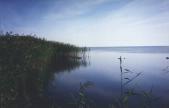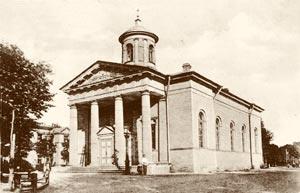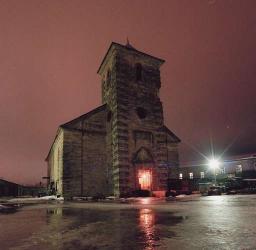Articles
/
Estonians
Estonians
Subject /
Ethnic culture/Ethnic communities
Subject /
Ethnic culture//
Estonians (their native name is Eestlased, old use - Maarakhvas) is an ethnic community. The Estonian language is related to the Baltic-Finnic subgroup od the Finno-Ugric branch of the Uralic language family. They live in Estonia (963 thousand people), Russia (28,1 thousand people), Sweden, Latvia. In 1897 in the Saint Petersburg Gubernia (without Saint Petersburg) there were 51,9 thousand Estonians (mainly in the western part, including the Gdov Gubernia). For 2002 in the Leningrad Oblast there were 1,4 thousand Estonians. People come from Estonia were noted on the territory of the western districts of the present Leningrad Oblast in the 18th century. The mass migration of peasants-Estonians began after the abolition of serfdom in Estland and Livland (Swedish Livonia) in 1816 and 1819, increased in the second half of the 19th century. In the beginning of the 20th century the migration was stimulated with the agricultural policy of P.A.Stolypin directed to developing individual farms. Estonians settled in the individual farms which were often located near the villages where representatives of other nationalities lived. There were also villages (in fact they were assumulations of individual farms) where the Estonian population prevailed (e.x. Zimititsy Village in Volosovo District). Estonians were occupied with farming, dairy farming. They grew grain crops (rye, oats, barley), potato. In farming they used progressive methods (many-field system, foddergrass cultivation) that marked them among the local peasants. Five-wall log houses on the low basement are typical for Estonians' village building. For building houses and outhouses they also used rubble stone. The ethnic specificity were kept in their food for a long time (dishes from portk, potato, blood sausage). Among the calendar rites the celebration of St.Yan' (St.John) Day on 24 June is the most kown. The religious are Lutherans, but there are also members of the Orthodox Church. The religious centres were in Saint Petersburg, in the towns of Yamburg, Gatchina, Luga, Teshkovo Village of Volosovo District. During the Great Patriotic War the number of Estonians in the Leningrad Oblast reduced because the German occupation authorities resettled them on the territory of Estonia.
Authors
Chistyakov, Anton Yuryevich
Persons
Stolypin, Pyotr Arkadyevich
Geography
Leningrad Oblast, the/Volosovo District/Bolshoye Teshkovo Village
Leningrad Oblast, the/Gatchina District/Gatchina Town
Historical Toponyms/Saint Petersburg Gubernia, the/Gdov Uyezd
Leningrad Oblast, the/Luga District/Luga Town
Historical Toponyms/Saint Petersburg Gubernia, the
Historical Toponyms/Yamburg Town
Leningrad Oblast, the/Volosovo District/Zimititsi Village
Bibliography
Засецкая М.Л. Эстонцы Лужского р-на Ленинградской области (конец 19 – середина 20 в.) // Население Ленинградской области: Материалы и исследования по истории и традиционной культуре. СПб., 1992, С.132-143
Засецкая М.Л. Система социализации у эстонцев-переселенцев Санкт-Петербургской губернии (вторая половина 19 – начало 20 в.) // Из истории Санкт-Петербургской губернии: Новое в гуманитарных исследованиях. СПб., 1997., С.52-54
В.А.Маамяги. Эстонцы в СССР 1917-1940 гг. М.: "Наука". 1990, С.52-54
Шкаровский М., Черепенина Н. История Евангелическо-лютеранской церкви на Северо-Западе России. 1917-1945. СПб., 2004, С.89-103
Смирнова Т.М. Национальность – питерские: Национальные меньшинства Петербурга и Ленинградской области в XX веке.-СПб.: Изд-во «Сударыня», 2002.-584 с.: ил., С. 431-481
Mentioned in articles:
|
hidden
|
Chudskoye Lake
LAKE CHUDSKOYE (obsolete: Peipus, Est. Peipsi jarv.) It is located in Estonia and Russian Federation (Pskov Oblast; in Leningrad Oblast, a small portion in Slantsi District.) The lake constitutes a common body of water with Lake Pskovskoye, to... more
|
|
|
|
hidden
|
Ethnic groups if the Leningrad Oblast
Ethnic communities of the Leningrad Oblast. The settled communities of people historically formed on the certain territory, having the common features of culture and self-consciousness expressed in the native name are called an ethnic community (or... more
|
|
|
|
hidden
|
Finno-Ugric nations
Finno-Ugric nations are ethnic communities speaking the languages of the Finno-Ugric group which is a part (together with the Samoyedic and Yukaghir groups) of the Ural (Uralic-Yukaghir) language family. Finno-Ugric nations have lived historically... more
|
|
|
hidden
|
Germen
The Germans (their own native name is Deutsche) are an ethnic community which is a part of the polpulation of the Leningrad Oblast. The religious Germans are Lutherans and Catholics. The Germans are the main population of Germany. In Russian (in... more
|
|
|
|
hidden
|
Ingermanlandia
INGERMANLANDIA (Swed. Ingermanland, Rus. Izhora Land or Ingria), historic and cultural region in the western part of the Leningrad Oblast (Kingisepp, Volosovo, Lomonosov, Vsevolozhsk, Gatchina, Tosno, western part of Kirovsk Districts.) The western... more
|
|
|
|
hidden
|
Kingisepp District
KINGISEPP DISTRICT, a part of Leningrad Oblast. Population: 74,300, of which, 52,100 live in the adm. center Kingisepp Town. Area: 2842.1 sq. km. It has 191 rural settlements. It was established in 1927.It borders with Lomonosov, Volosovo, and... more
|
|
|
|
hidden
|
Lutheran Church of St. Apolstle Peter (the village of Maliye Kolpany, Gatchina District)
Lutheran Church of Apolstle Peter (the village of Maliye Kolpany, Gatchina District), Finnish Church is placed at the cemetery (parish of Kolpany, it was founded in 1640). The Church for 680 seats was built from quarry stones in 1799–1800... more
|
|
|
|
hidden
|
The Lutheran Church of St. Andrew (Bolshoye Kuzemkino Village, Kingisepp District)
The Lutheran Church of St. Andrew (Bolshoye Kuzemkino Village, the Kingisepp District). A Lutheran community was founded in 1640, from 1704 it was added to the Narva church of St. Michael. The first Church of St. Andrew was consecrated on 30... more
|
|
|
|
hidden
|
v. Sankt-Peterburg Gubernia, the
ST. PETERSBURG GUBERNIA, historic adm. and territorial unit of Russia. Established in 1708 by the decree of Peter I subdividing Russia into eight gubernias. It included the areas of the current Leningrad, Novgorod, Pskov, and Tver Oblasts, and... more
|
|
|
|
hidden
|
|















